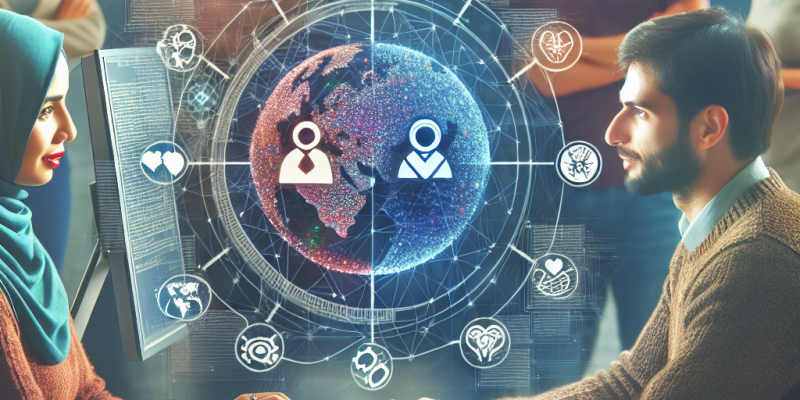Harnessing NLP for Social Good: Projects Aiming to Make a Difference

In recent years, the rise of Natural Language Processing (NLP) has ushered in a new era of technological innovation. As a subset of artificial intelligence, NLP focuses on the interaction between computers and humans through natural language. With its ability to understand, interpret, and generate human language, NLP presents limitless potential for social good. A growing number of projects leverage this technology to address pressing societal challenges, from healthcare and education to environmental conservation and disaster response. This article delves into several noteworthy initiatives that are harnessing NLP to make a tangible impact on communities worldwide.
1. Healthcare: Enhancing Patient Care and Mental Health Support
One of the most impactful applications of NLP is in the healthcare sector. Several projects aim to improve patient care through the analysis of clinical notes and patient interactions.
A. Clinical Decision Support Systems
NLP is being utilized to extract critical information from unstructured clinical data. For instance, systems that analyze electronic health records can help healthcare providers identify patterns and trends related to patient outcomes. By providing insights based on vast datasets, these tools can support timely clinical decisions that improve treatment efficacy.
B. Mental Health Analysis
Organizations like Woebot Health are incorporating NLP to create chatbots that provide mental health support. Woebot employs conversational agents to engage users in therapeutic dialogue, helping them to manage anxiety and depression. By analyzing user text inputs, the system offers evidence-based responses, facilitating a supportive space for self-reflection and coping strategies, particularly for those with limited access to professional mental health resources.
2. Education: Enhancing Learning Experiences
NLP technologies are also transforming the education system, offering tailored support to students and teachers alike.
A. Intelligent Tutoring Systems
Platforms like Carnegie Learning utilize NLP to provide personalized tutoring experiences. By analyzing students’ responses to math problems, the system can identify gaps in understanding and adapt the curriculum accordingly. This level of personalization ensures that students receive targeted instruction, enhancing their learning outcomes and reducing frustration.
B. Language Accessibility
Projects such as Google’s Translate for Schools aim to break down language barriers in classrooms. By providing real-time translations of educational materials, these initiatives allow non-native speakers to engage fully in their studies. This not only promotes inclusivity but also enriches the learning environment for all students.
3. Environmental Conservation: Monitoring and Advocacy
NLP technologies are proving invaluable in the fight against climate change and other environmental challenges.
A. Analyzing Environmental Policies
Organizations like the World Wildlife Fund (WWF) employ NLP to analyze vast amounts of environmental legislation worldwide. By automatically processing and categorizing policy documents, these systems can highlight trends, track compliance, and identify gaps in environmental protection efforts. The insights derived from this analysis can inform advocacy work and drive policy changes critical to conservation efforts.
B. Public Sentiment Analysis
NLP is being deployed to gauge public sentiment on environmental issues through social media analysis. Projects like the Climate Action Tracker analyze tweets, posts, and blogs to understand public opinion about climate change policy and advocacy efforts. By understanding how communities feel about these issues, organizations can better tailor their outreach and communication strategies to mobilize support for environmental initiatives.
4. Disaster Response: Accelerating Recovery Efforts
In times of crisis, NLP technologies play a crucial role in disaster response and recovery.
A. Crisis Text Line
The Crisis Text Line utilizes NLP to process and prioritize messages from individuals seeking immediate support in emergencies. By analyzing the language used in messages, the system can quickly identify those in the most urgent need of help. This ensures that resources are allocated efficiently, making a significant difference during critical situations.
B. Information Extraction from Social Media
During natural disasters, social media becomes a vital source of real-time information. Projects like the Disaster Emergency Committee use NLP to extract relevant information from tweets and posts. This includes identifying locations of need, coordinating volunteer efforts, and disseminating crucial information to affected communities.
Conclusion
The applications of Natural Language Processing for social good are vast and varied, showcasing the technology’s potential to address some of the world’s most pressing issues. By improving healthcare, enhancing education, supporting environmental conservation, and streamlining disaster response, NLP is empowering organizations and individuals alike to drive meaningful change in their communities. As technology continues to evolve, the opportunities for harnessing NLP for social good are bound to expand, promising a future where intelligent systems play a significant role in advancing societal well-being.














